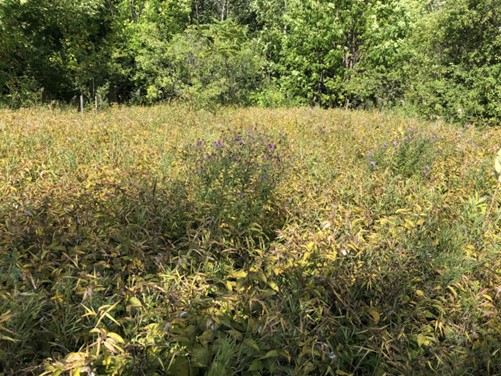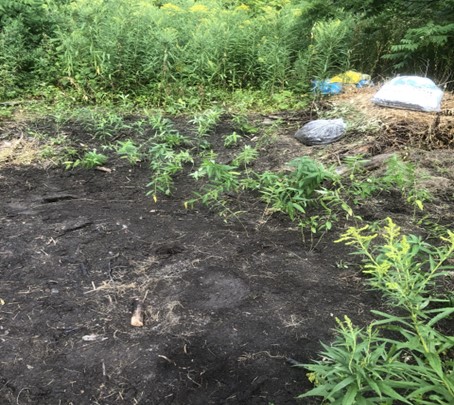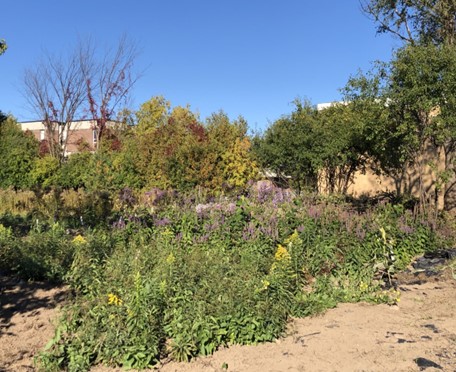by Michelle St-Germain
 The Dog-strangling Vine (DSV) management project was proposed as a volunteer-based pilot to the Alta Vista Community Association (AVCA) Board of Directors. Permission was obtained from the City of Ottawa and a Consent to Enter Agreement was in effect from 1 April to 30 November 2022.
The Dog-strangling Vine (DSV) management project was proposed as a volunteer-based pilot to the Alta Vista Community Association (AVCA) Board of Directors. Permission was obtained from the City of Ottawa and a Consent to Enter Agreement was in effect from 1 April to 30 November 2022.
Objectives
- Control the spread of DSV in two ecologically significant areas of Alta Vista.
- Raise community awareness about the detrimental effects of DSV and the importance of native species.
- Acquire community-wide knowledge, experience, and expertise needed to develop and implement a long-term invasive plant management plan for Alta Vista that could also serve as a model for other neighbourhoods across Ottawa.
- Generate support for a comprehensive City of Ottawa Invasive Plant Management Strategy.
Methods
- Pulled down dried DSV from branches and trunks of young planted trees. Placed cardboard over DSV stems immediately under the trees and covered it with collected organic debris.
- Cleared open areas of mainly DSV monoculture of branches, rocks, and other protrusions. Flattened DSV stems to ground level and covered with tarps.
- Dug up DSV roots and stored plants in garbage bags for 2 weeks before discarding in garbage collection.
- Filled in newly dug areas with native plants.
- Where DSV began to flower elsewhere, it was cut at root base, collected, and piled on thick layered cardboard.
- Where missed flower heads developed into seed pods, they were carefully removed and stored/discarded as with uprooted plants.
Results
- 55 volunteers signed up and worked over 2000 hours between 1 April and 30 September.
- Approximately 100 square metres of DSV-contaminated land was restored with native plants, trees, and shrubs, and approximately another 500 square metres was prepared for full restoration the following year.
- Over 1000 pounds of DSV roots and 500 pounds of seed pods were removed and bagged.
- Over 25 City-planted trees were saved from DSV.
- Approximately 100 new native trees and shrubs were planted.
- Over 2000 native wildflowers were planted, of which 1500 were grown by volunteers themselves.
- Remediated areas saw a visible increase in pollinator activity (including Monarch butterflies).
- 7 articles were published in VISTAS, the local community newspaper, and shared via the AVCA email distribution list and social media.
- An information pamphlet was created, and approximately 300 copies were handed out or distributed to interested community residents.
- 2 on-site information sessions were presented to the public, with a turnout of 20 people (separate from weekly work bee information sessions).
- Volunteers staffed a community outreach booth at the AVCA Farmers Market, handing out pamphlets, answering questions, and showcasing DSV plant samples to help the public identify DSV in home yards.
- The AVCA leveraged the project to encourage other community associations to join it in pressing the City of Ottawa to create a dedicated position to work with community groups on invasive species removal.









what a great case study! how long did you leave the tarps on before digging out the DSV? You should share with the Invasive Species Council as an example.
Do you need more tarps? I have two blue tarps. Ken Smith
Hi Tracey,
The time we left the tarps varied. It was mostly based on the tarps we had available. We try to leave the tarps for at least one year before moving them to a new location but it’s best to leave for for two years.
Hi Ken,
We can always use some more tarps. Please send an email to avcadsv@gmail.com and I will give you the address where you can drop them off